Kelei Cao
Diagnosing Concept Drift with Visual Analytics
Jul 29, 2020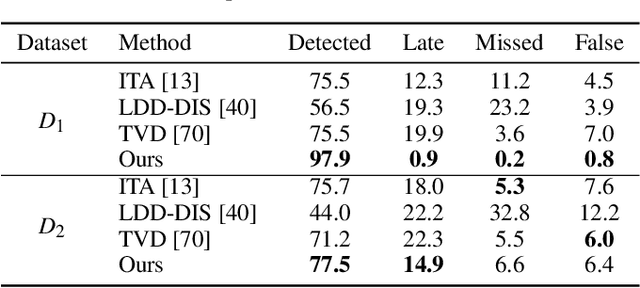
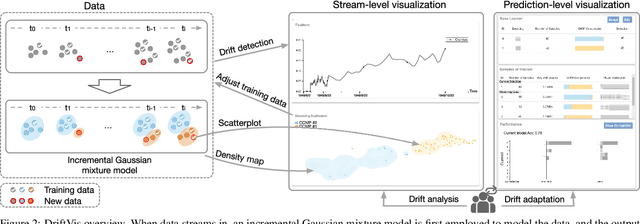


Abstract:Concept drift is a phenomenon in which the distribution of a data stream changes over time in unforeseen ways, causing prediction models built on historical data to become inaccurate. While a variety of automated methods have been developed to identify when concept drift occurs, there is limited support for analysts who need to understand and correct their models when drift is detected. In this paper, we present a visual analytics method, DriftVis, to support model builders and analysts in the identification and correction of concept drift in streaming data. DriftVis combines a distribution-based drift detection method with a streaming scatterplot to support the analysis of drift caused by the distribution changes of data streams and to explore the impact of these changes on the model's accuracy. Two case studies on weather prediction and text classification have been conducted to demonstrate our proposed tool and illustrate how visual analytics can be used to support the detection, examination, and correction of concept drift.
Analyzing the Noise Robustness of Deep Neural Networks
Jan 26, 2020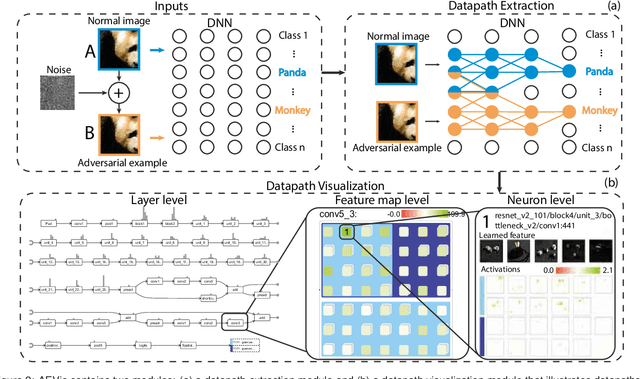
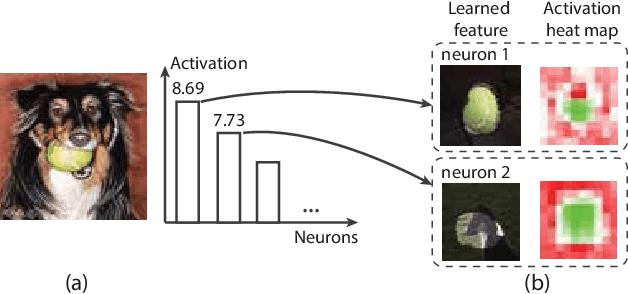
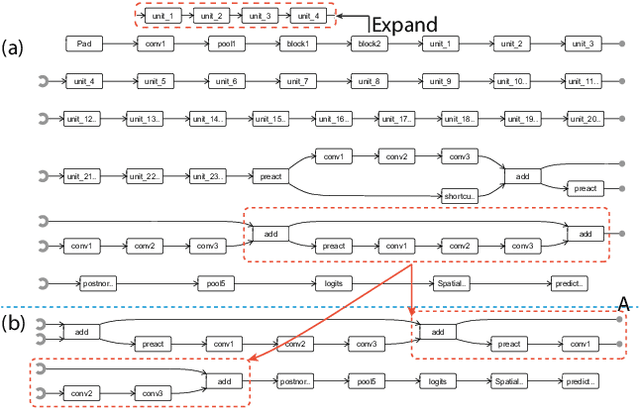
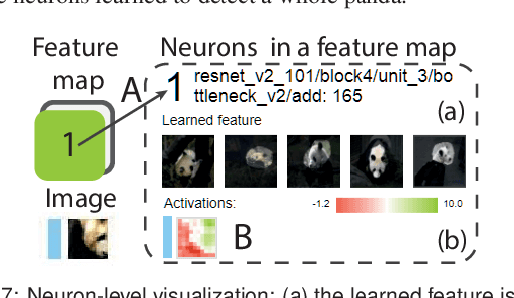
Abstract:Adversarial examples, generated by adding small but intentionally imperceptible perturbations to normal examples, can mislead deep neural networks (DNNs) to make incorrect predictions. Although much work has been done on both adversarial attack and defense, a fine-grained understanding of adversarial examples is still lacking. To address this issue, we present a visual analysis method to explain why adversarial examples are misclassified. The key is to compare and analyze the datapaths of both the adversarial and normal examples. A datapath is a group of critical neurons along with their connections. We formulate the datapath extraction as a subset selection problem and solve it by constructing and training a neural network. A multi-level visualization consisting of a network-level visualization of data flows, a layer-level visualization of feature maps, and a neuron-level visualization of learned features, has been designed to help investigate how datapaths of adversarial and normal examples diverge and merge in the prediction process. A quantitative evaluation and a case study were conducted to demonstrate the promise of our method to explain the misclassification of adversarial examples.
Cross Domain Knowledge Transfer for Person Re-identification
Nov 18, 2016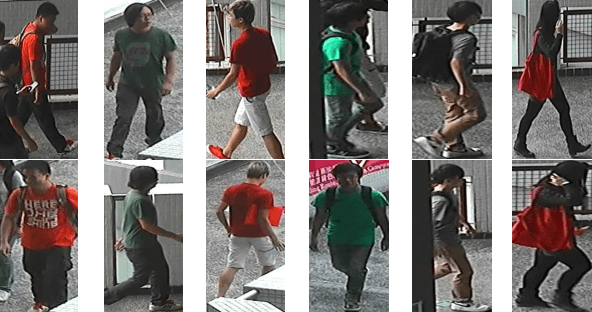

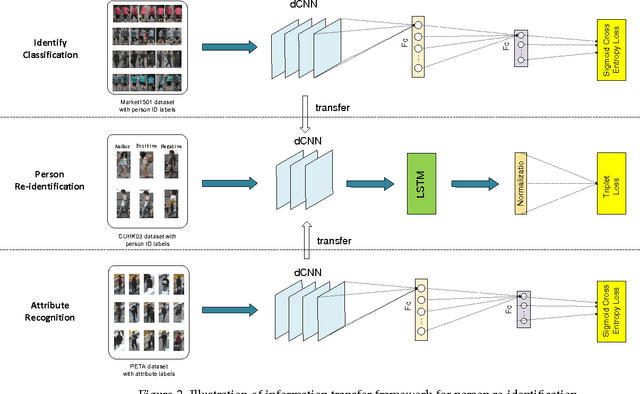
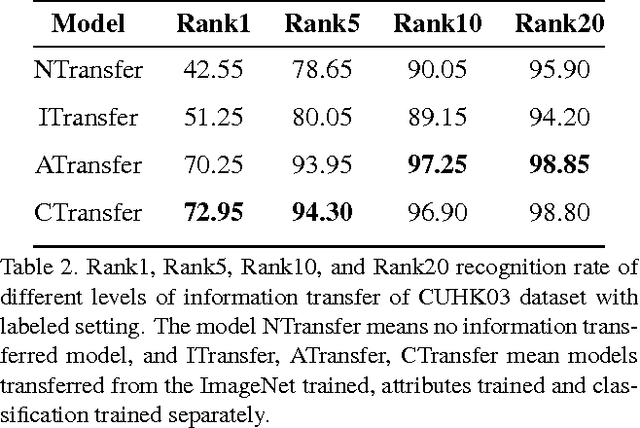
Abstract:Person Re-Identification (re-id) is a challenging task in computer vision, especially when there are limited training data from multiple camera views. In this paper, we pro- pose a deep learning based person re-identification method by transferring knowledge of mid-level attribute features and high-level classification features. Building on the idea that identity classification, attribute recognition and re- identification share the same mid-level semantic representations, they can be trained sequentially by fine-tuning one based on another. In our framework, we train identity classification and attribute recognition tasks from deep Convolutional Neural Network (dCNN) to learn person information. The information can be transferred to the person re-id task and improves its accuracy by a large margin. Further- more, a Long Short Term Memory(LSTM) based Recurrent Neural Network (RNN) component is extended by a spacial gate. This component is used in the re-id model to pay attention to certain spacial parts in each recurrent unit. Experimental results show that our method achieves 78.3% of rank-1 recognition accuracy on the CUHK03 benchmark.
 Add to Chrome
Add to Chrome Add to Firefox
Add to Firefox Add to Edge
Add to Edge